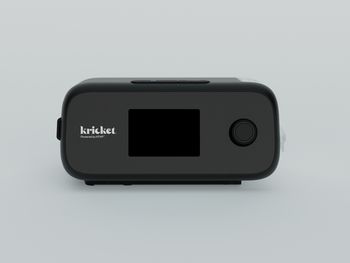
One doctor's vision of the utopian practice
Let's take a look at how a "utopian medical practice" in the not-too-distant future functions from the perspectives of the patient, physician, office staff, nurse, billing department, and referred physician.
Key Points
It's understandable, but it shouldn't be an excuse to throw up your hands and do nothing. The right electronic patient care system will pay for itself many times over by making your practice operate more efficiently, increasing patient and staff satisfaction, reducing your stress, and enhancing the quality of care you deliver.
Let's take a look at how a "utopian medical practice" in the not-too-distant future functions from the perspectives of the patient, physician, office staff, nurse, billing department, and referred physician. Although the example I use is of a utopian pediatric practice-after all, I'm a pediatrician-most of the principles can be readily applied to any specialty.
A problem arises: Meet Mrs. Jones and her three-year-old daughter Myra. It is 1 a.m., and Myra has woken up with a fever and a rash. She is my patient.
Worried about the symptoms, Mrs. Jones accesses my practice's website. There she finds helpful information that was chosen and approved by my partners and me. Based on this information, she is comfortable managing Myra through the night, but wants to bring her in to see me in the morning.
To set up this visit, Mrs. Jones clicks a link on the site. After answering a few questions about the type of appointment, she is offered several available times from which she can choose a convenient one.
Visiting the office: Mrs. Jones already entered and confirmed Myra's insurance and demographic information when she made the appointment online. Upon arrival, they are greeted by name and checked in by the receptionist with a few clicks of the mouse.
The nurse identifies them easily by the photos in their electronic record, addresses them by name, and leads them back to an exam room. After the nurse prepares Myra, I'm there in no time to see her.
After the visit: On her way out, Mrs. Jones is provided with a customized printout with my instructions regarding Myra's medications and information on when to follow-up or call with other problems.
Myra's prescription is electronically sent and filled at Mrs. Jones's chosen pharmacy.
Some lab tests were ordered at Myra's visit. A lab technician draws Myra's blood. Myra cries. (Sorry, this world isn't that perfect!) Later that day, Mrs. Jones logs on to a website from home and sees the results of Myra's labs, complete with an explanation from me.
Mrs. Jones still has a question regarding Myra and her treatment. From the secure login where she accessed the lab results, she e-mails a question to our practice. Because the question might require a timely answer, Mrs. Jones sends it to the nurse by instant message, rather than my e-mail box-an option available during office hours. The nurse sends a text message to Mrs. Jones's cellular phone, asking her to log in to the secure server for the answer to her question.
Newsletter
Stay informed and empowered with Medical Economics enewsletter, delivering expert insights, financial strategies, practice management tips and technology trends — tailored for today’s physicians.








